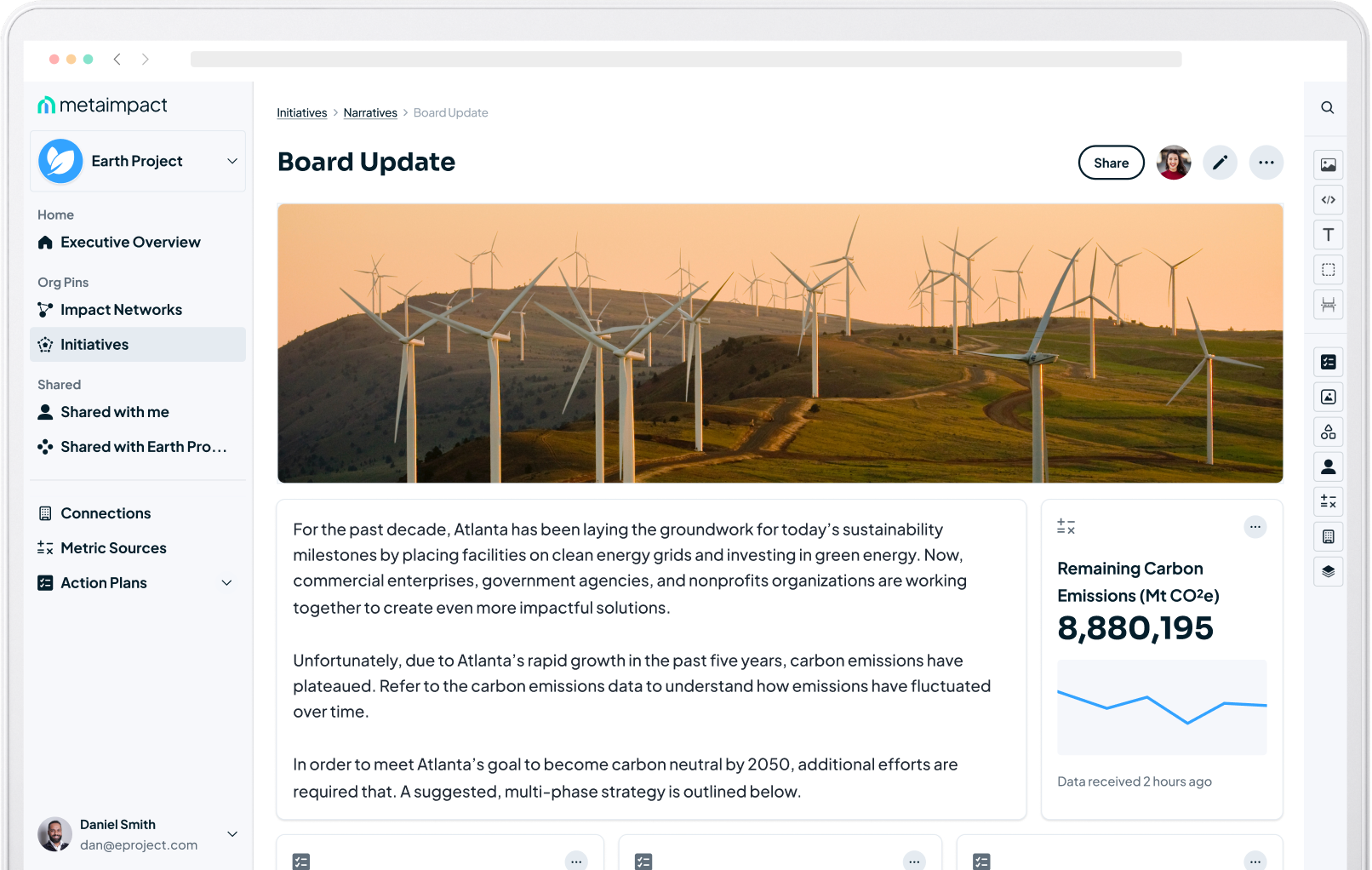Monitoring the Metrics that Matter
Quantifying the impact of strategic initiatives is a critical aspect of success in today's digital age. It’s a task that is becoming increasingly complex, yet more vital than ever before.

All organizations—large enterprises, nonprofits, governmental agencies, and the like—have strategic initiatives. Depending on the organization, these initiatives may entail meeting workforce needs, making health care available and affordable, launching product lines, or meeting sustainability goals. The options are endless.
No matter their nature, the universal truth is that strategic initiatives are never easy to achieve. They are tackled over many months or years and their success depends largely on one thing—executive alignment and support. In order to drive progress, it’s imperative to arm upper management with the knowledge they need to make the best strategic decisions. That should be easy considering that through widespread digital transformation, most businesses have gained access to an abundance of data, available anytime, anywhere. The challenge is that the average business still struggles to use even a fraction of this data in a way that drives action from the top down.
The software industry’s response to this data conundrum has widely been centered on one feature—dashboards. Theoretically, dashboards help by aggregating and displaying critical metrics and key performance indicators on a single screen. While certainly helpful, dashboards still rely on end users to interpret data and relay gleaned insights to key stakeholders. Unfortunately, there is often a gap in this process and information that should impact business decisions never makes its way to upper management. Even if upper management is informed, the narrative surrounding the insight often isn’t communicated in a way that elicits attention. If an executive doesn’t grasp an insight’s significance, the data is ignored and never given the chance to drive real value.
In order to use data more effectively, a different approach is needed—software that enables data storytelling. Data storytelling is the effective communication of data insights. It’s the act of putting data into context in order to inspire action and influence strategic decisions.
Metaimpact answers the business world’s need to better leverage data by operationalizing data storytelling. A core function of the platform is that it gives users the ability to build any number of data stories in persistent, digital shared spaces. Within each shared space, users can provide context to a corporate initiative, departmental initiative, or business relationship.
A shared space is highly customizable, giving users the ability to outline the desired outcomes of an initiative or business relationship as well as any corresponding action plans, assets, and performance metrics. The metrics that are shared in a space update in real time, providing insight into progress made as well as indicating when efforts are straying from the intended direction.
In order to speak to a specific moment in time or drive a specific action, users can create individual narratives within a shared space. The narratives feature gives users the ability to build a more focused data story with copy, images, and custom Metaimpact objects. Using these components, users are able to craft data into a comprehensive story arc that communicates the status of an initiative or business relationship with a suggested course of action.
Once a data story is crafted in Metaimpact, it can be shared with executives by inviting them into the digital space. It’s a mutually beneficial system. Upper management gets to adopt a standard, streamlined process for reviewing and actioning key insights and employees benefit from enacting data-driven change that ensures their success at both a departmental and company level.
The benefits of data storytelling are profuse. By presenting data in an informative, persuasive way, it’s much easier to get buy-in from upper management to fund new initiatives, streamline processes, remove roadblocks, or add additional resources. It’s a useful tool across every functional area. Analysts and data scientists are not the only ones who can make data actionable; every department from marketing to customer success can use data storytelling to drive change.
The better organizations communicate insights, the more impactful they become. As data storytelling becomes a more integral part of the business model, new opportunities will surface, valuable internal conversations will occur, departments will be better aligned, and strategic decisions will be made that make the difference between success and failure. It’s time to embrace a new path forward.

Learn how Metaimpact empowers organizations with the digital infrastructure needed to enable systems change.

Download the ebook to learn how your organization can go beyond reporting and put a sustainability program in place that drives real progress.

Download the one pager to learn how Metaimpact enables organizations to build digital impact networks to confront the world’s biggest problems.

Learn how Metaimpact empowers organizations with the digital infrastructure needed to enable systems change.

Quantifying the impact of strategic initiatives is a critical aspect of success in today's digital age. It’s a task that is becoming increasingly complex, yet more vital than ever before.

Last week, Metaimpact gathered with a variety of businesses, government organizations, and NGOs that aspire to drive progress in the state of Indiana. The purpose of the event? To discuss new opportunities that have emerged from the metaverse.

In order to use data more effectively, a different approach is needed—software that enables data storytelling.

As data storytelling becomes a more integral part of business strategy, new opportunities will surface, valuable internal conversations will occur, and departments will become more aligned.

Much of the world associates the metaverse with avatars and immersive VR experiences, which is key for consumers and some business applications, but this new computing paradigm offers a more foundational and transformative opportunity for the business world.

Request a demo to learn how Metaimpact enables data storytelling.